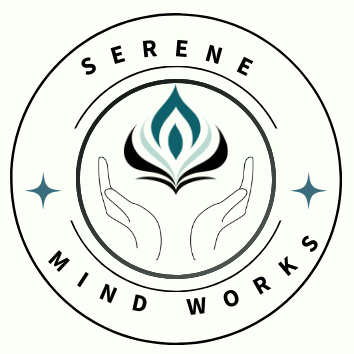
Mindfulness is about living in the moment and truly experiencing life as it happens. It’s not a distant concept reserved for monks or yogis. It’s for everyone who wants to find peace amid the chaos.
This concept has its roots in ancient meditation practices. But today, it’s evolved beyond religious or spiritual boundaries, becoming a practical tool for bettering everyday life. By focusing on the here and now, rather than getting caught up in endless thoughts about the past or future, you’re essentially training your mind to live in the present.
So, why all the hype about mindfulness? It plays a big role in managing stress and improving mental health. It’s like a mental workout that strengthens focus, boosts emotional resilience, and enhances personal well-being.
Practicing mindfulness isn’t just about sitting still. It’s about tuning in to what’s happening without judgment or stress. From listening more intently to tasting food with focus, these practices can be woven into daily routines seamlessly.
The core principles here? Present moment awareness, acceptance, and a non-judgmental attitude are key. By cultivating these qualities, anyone can unlock the benefits of mindfulness, making life a bit more peaceful and a whole lot richer.
Starting Your Mindfulness Journey
Starting mindfulness can seem daunting, but it doesn’t have to be complicated. It’s all about finding simple ways to bring awareness into your daily routine. Whether you take a few deep breaths in the morning or pay closer attention while sipping your coffee, each small act is a step toward becoming more mindful.
One powerful way to kickstart your mindfulness practice is by setting aside a few minutes each day for mindful meditation. This isn’t about sitting cross-legged on a mountain. Find a comfortable seat, close your eyes, and focus on your breath. When your mind inevitably wanders, gently bring it back to your breathing without beating yourself up about it.
Consistency is key when building any new habit, and mindfulness is no different. Start with short, manageable sessions—just five minutes if that’s all you can spare. Gradually increase this time as it becomes more natural to you.
Like any journey, expect to face some hurdles. You might struggle with restlessness or feel like you’re not ‘doing it right.’ Remember, mindfulness isn’t about perfection; it’s about making an effort each day to be more present, no matter how small that effort looks.
The 5 R’s of Mindfulness: Core Concepts
Mindfulness isn’t just about sitting quietly; it’s about integrating certain core concepts into daily life. That’s where the 5 R’s come into play, serving as guiding principles for living mindfully.
1. The first R is Recognition: This is all about acknowledging what’s happening in your mind and body without trying to change it immediately. It’s like pausing to see what’s going on beneath the surface before jumping to any conclusions or actions.
2. Relief comes Next: As you become more aware and recognize what’s happening internally, mindfulness can help relieve stress and anxiety. Simply observing thoughts and feelings without immediate reaction creates space for relaxation.
3. Then there’s Reflection: Mindfulness encourages a deeper self-awareness, which often leads us to reflect on our thoughts and emotions. It’s an ongoing practice of understanding ourselves better, uncovering insights that might have been hidden beneath day-to-day clutter.
4. Resilience is the Fourth R: Building mental and emotional strength through mindfulness helps us handle life’s ups and downs with more grace and patience. It’s not about avoiding challenges but learning to face them with a calmer mind.
5. Response is Key: The choices we make after recognizing, relieving, reflecting, and building resilience. Instead of reacting impulsively, mindfulness teaches us to craft thoughtful responses that reflect our true intentions.
Exploring the 7 C’s of Mindfulness
Ever wondered what makes mindfulness such a transformative practice? Enter the 7 C’s, a framework to deepen your mindfulness journey and enrich your life.
1. Curiosity is the first C: Embrace a sense of wonder and interest in the world around you. This mindset encourages you to explore your thoughts, emotions, and experiences with childlike openness.
2. Courage: Is not just for heroes in books; it’s for anyone willing to face their inner world. Mindfulness takes guts as it involves facing uncomfortable truths about ourselves. With practice, this bravery can lead to massive personal growth.
3. Compassion: Is integral to mindfulness. It’s about being kind, both to yourself and others. As you practice mindfulness, this kindness helps soften self-critical thoughts and improve relationships.
4. Calmness: Comes with practicing mindfulness regularly. Even in the middle of a busy day, cultivating a sense of inner peace is possible by simply taking a moment to breathe and observe.
5. Concentration: Improves through mindful practice, allowing you to remain focused and present. This strengthens attention in all areas of your life, making tasks feel less chaotic.
6. Clearness: Is about gaining clarity on your intentions and actions. As mindfulness sharpens your focus, decision-making becomes easier with a greater understanding of what truly matters.
7. Connection: Rounds out the 7 C’s, highlighting the importance of interconnectedness. Mindfulness fosters deeper connections with those around you and the world, nurturing a sense of belonging.
The 3 C’s of Mindfulness: A Simplified Approach

Finding a way to simplify the wealth of mindfulness information can be helpful, and that’s where the 3 C’s come into play—Concentration, Clarity, and Cultivation.
1. Concentration: Serves as the foundation of mindfulness. It’s all about directing your attention where it’s needed most, like focusing on your breath or listening deeply during a conversation. Training your mind to focus steadily takes time, but each moment spent practicing strengthens this crucial skill.
2. Clarity: Develops as you practice mindfulness regularly. It allows you to see things as they truly are, cutting through confusion and emotional turmoil. With greater clarity, understanding the motivations behind your feelings and actions becomes possible, leading to wiser decisions.
3. Cultivation: Involves nurturing a mindfulness practice that endures throughout life’s highs and lows. It’s about integrating the essence of mindfulness into every facet of life, from choosing patience in frustration to finding joy in simple moments.
These 3 C’s capture the essence of living mindfully in a compact and approachable way. By focusing on these key elements, anyone can start building a more mindful, intentional life without feeling overwhelmed.
